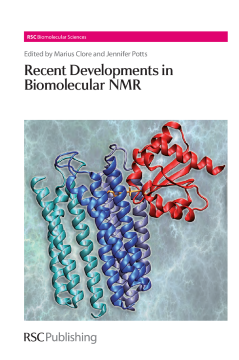
Additional Information
Book Details
Abstract
NMR spectroscopy is widely used in biomolecular science particularly for structure determination of proteins, nucleic acids and carbohydrates. Much of the innovation within NMR spectroscopy has been within the field of protein NMR spectroscopy, an important technique in structural biology.
Filling a gap in the literature, this book draws together experts in the field to discuss the real advances in NMR methods that have occurred or have an impact on the biomolecular field in the last few years. The coverage includes recent developments in using NMR for determination of protein structures, membrane proteins, the dynamics of RNA and advances in NMR in drug discovery. Edited by leading biological NMR spectroscopists, the book is essential reference for researchers in industry and academia interested in or joining this bioanalytical field.
Dr Marius Clore's career began at University College London where he studied for his BSc in Biochemistry, moving to University College Hospital Medical School he became an MD and finally a PhD at the National Institute for Medical Research, London. In 1984, he became head of the Biological NMR Group at Max-Planck Institute for Biochemistry and then moved in 1988 to NIH, USA. He is currently an NIH Distinguished Investigator and Chief of the Protein Nuclear Magnetic Resonance Section and has made many pioneering contributions in the development of NMR spectroscopy for structural characterization of biological macromolecules. Dr Clore has been awarded numerous prizes and honours and was ranked in the top 20 in h-index ranking of living chemists in 2009. He is also a 3rd Degree black belt in Tae Kwon Do. Dr Jennifer Potts studied at the University of Sydney before becoming a postdoctoral fellow at the University of Oxford in 1992. Staying at Oxford until 2005 as a research associate and latterly lecturer in biochemistry, she then became Anniversary Reader at the University of York where her recent work has been on fibronectin recognition domains which fold on experiencing their target.
